In the vast theater of the wild, few gazes command as much respect and instill as much awe as those belonging to raptors. These birds of prey possess eyes so penetrating, so uncompromisingly fierce, that they can freeze potential threats and prey alike with just a glance. Their stares aren’t merely intimidating—they’re evolutionary marvels designed for hunting efficiency and survival. From the golden eagle’s piercing amber gaze to the owl’s hypnotic stare, these avian predators have perfected the art of visual intimidation through millions of years of evolution. This exploration takes us into the world of raptors with the most formidable eyes in the animal kingdom—birds whose glances speak volumes about their power, precision, and predatory prowess.
The Evolutionary Purpose Behind the Predatory Gaze
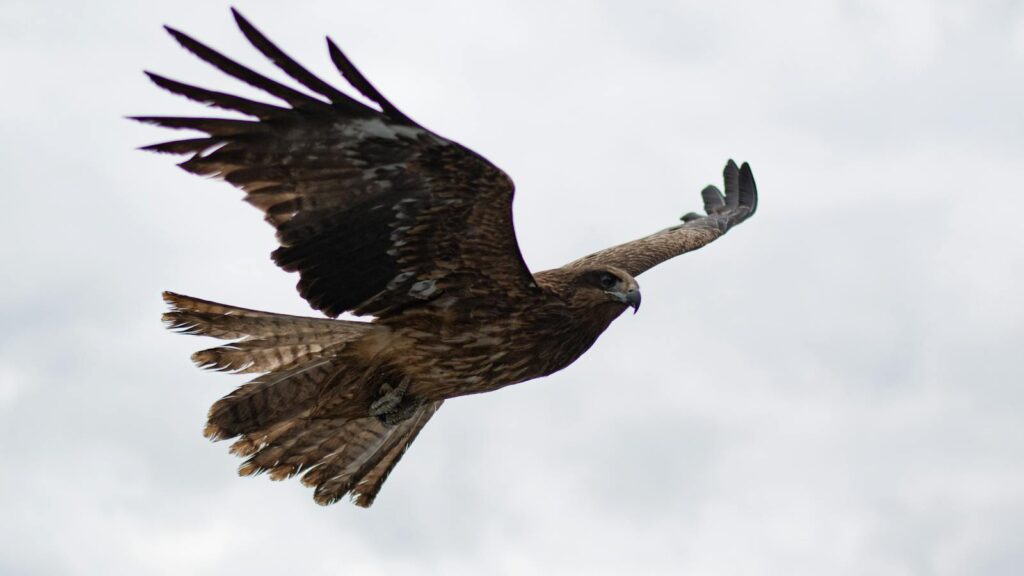
Raptors have evolved extraordinarily specialized visual systems that serve as their primary hunting tools. Their intimidating gaze isn’t merely for show—it’s the result of specific adaptations that enhance hunting success and survival. Most raptors possess forward-facing eyes that provide binocular vision, similar to humans but significantly more acute. This eye positioning allows for exceptional depth perception, critical when diving at high speeds to capture prey. Additionally, the intensity of their stare serves as a powerful deterrent to potential threats and competitors. Even among other predators, few can withstand the unwavering focus of a raptor’s gaze, making it an effective tool for establishing dominance without physical confrontation.
The Golden Eagle: Royalty With a Lethal Stare
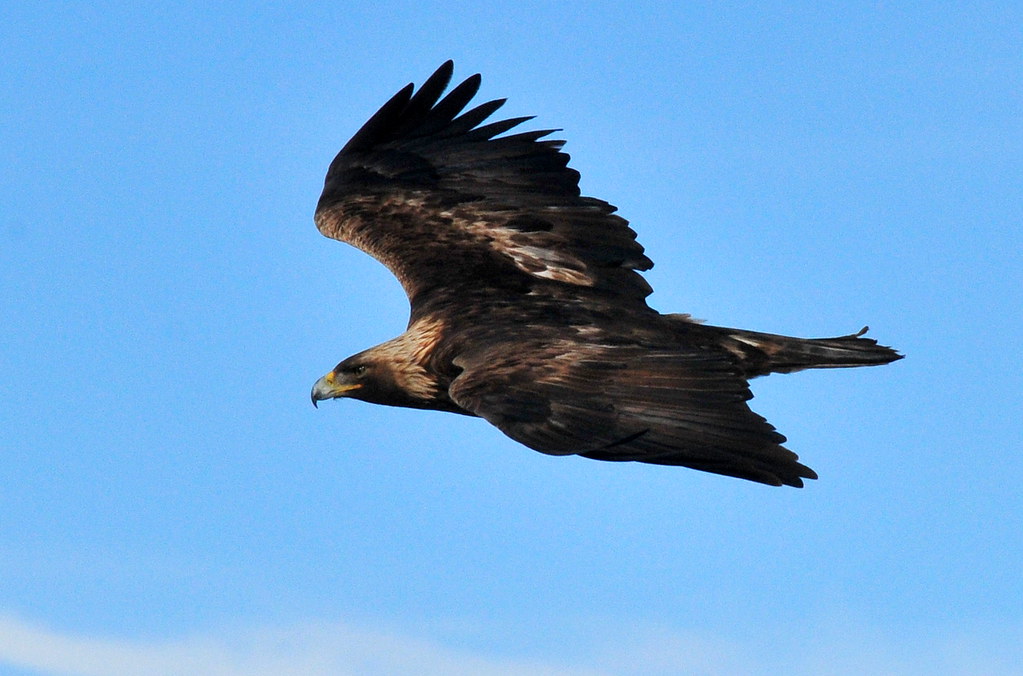
The golden eagle (Aquila chrysaetos) possesses one of the most intimidating gazes in the raptor world, with eyes that reflect both regal confidence and predatory intention. Their eyes, amber to deep brown in color, can spot a rabbit from nearly two miles away—a testament to visual acuity that’s approximately eight times sharper than human vision. Golden eagles use their penetrating stare to track prey movements with extraordinary precision before launching their powerful hunting dives. Their eyes contain an estimated one million light-sensitive cells per square millimeter, compared to the human eye’s 200,000, allowing them to process visual information with remarkable detail and clarity. This magnificent bird’s unwavering gaze has become a symbol of power across many cultures, representing strength and authority that few other creatures can match.
The Peregrine Falcon: Speed Demon With Precision Vision
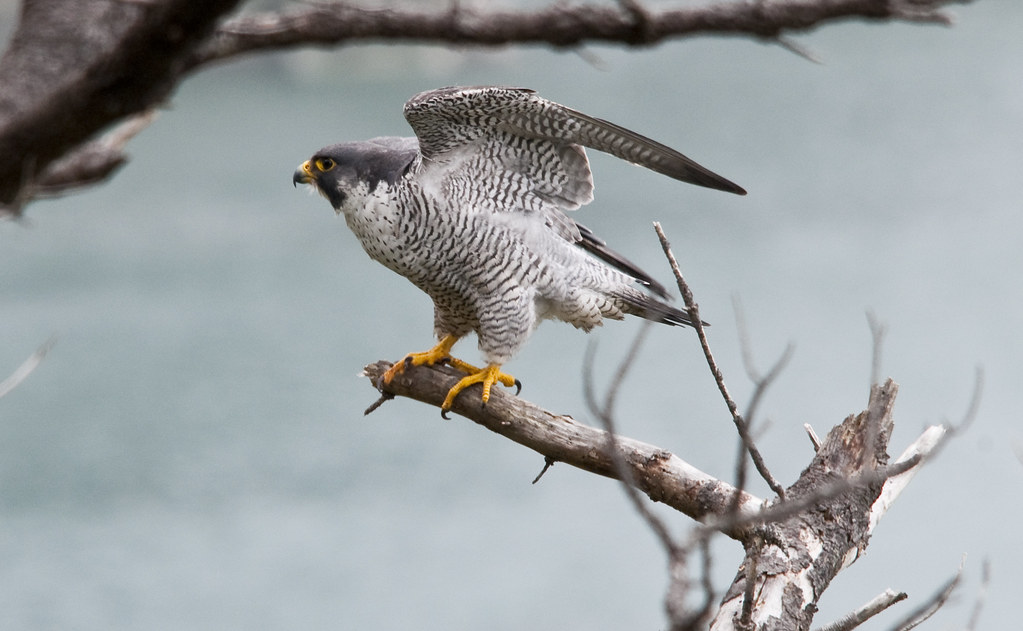
Peregrine falcons possess dark, intensely focused eyes that complement their reputation as the fastest animals on Earth. Their visual system is specially adapted to maintain clear focus during hunting dives that can exceed 240 miles per hour—a feat that would render most other creatures effectively blind from the speed alone. These raptors’ eyes contain a higher concentration of photoreceptors than almost any other bird, giving them extraordinary visual acuity that allows them to spot prey from heights of up to 3,000 feet. The falcon’s intimidation factor comes not only from their piercing stare but from the dark “moustache” markings that frame their eyes, creating a masked appearance that enhances their fearsome countenance. Their visual processing speed is so remarkable that they can track fast-moving prey with millisecond precision, making their gaze not just intimidating but a marvel of biological engineering.
The Great Horned Owl: Masters of the Night Stare
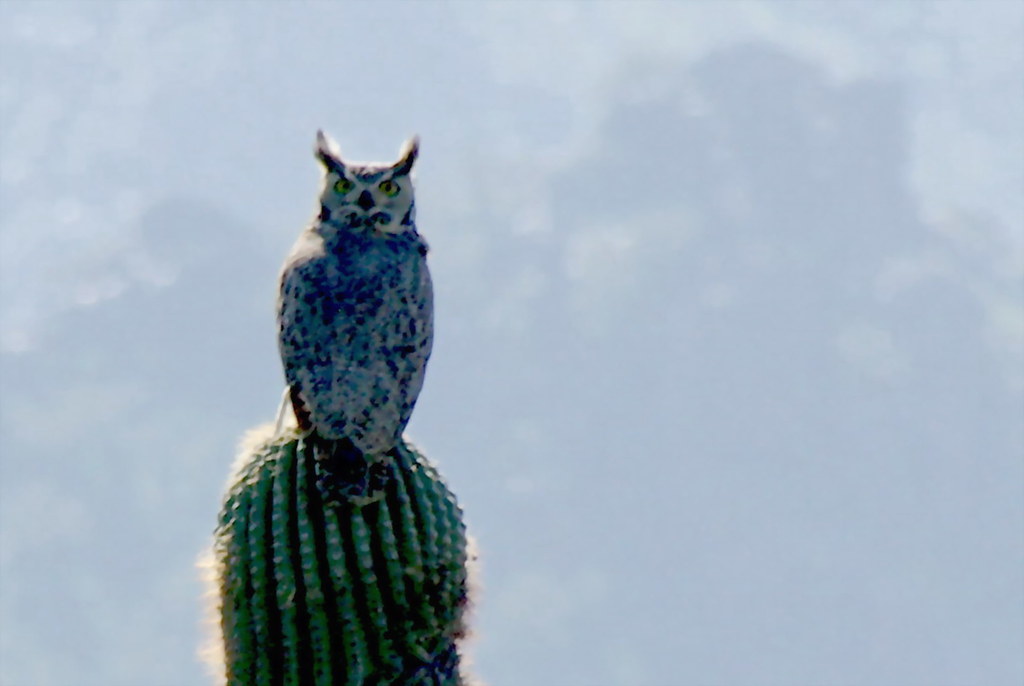
The great horned owl possesses perhaps the most hypnotic and unsettling stare in the raptor world—large, forward-facing yellow eyes that seem to pierce through darkness and into the soul of their prey. Unlike diurnal raptors, these nocturnal hunters have eyes adapted for low-light conditions, with pupils that can dilate enormously to gather available light. Their eyes are so large that they occupy more than 5% of their total body weight and are fixed in their sockets, requiring the owl to turn its entire head to change its field of vision. The mesmerizing quality of their gaze is heightened by their ability to rotate their heads up to 270 degrees, creating an almost supernatural appearance that has contributed to their mythological status in many cultures. Combined with their distinctive “horned” tufts (which aren’t actually ears but feather displays), their penetrating yellow eyes create one of the most intimidating facial expressions in the animal kingdom.
The Bald Eagle: Symbolic Stare of a Nation
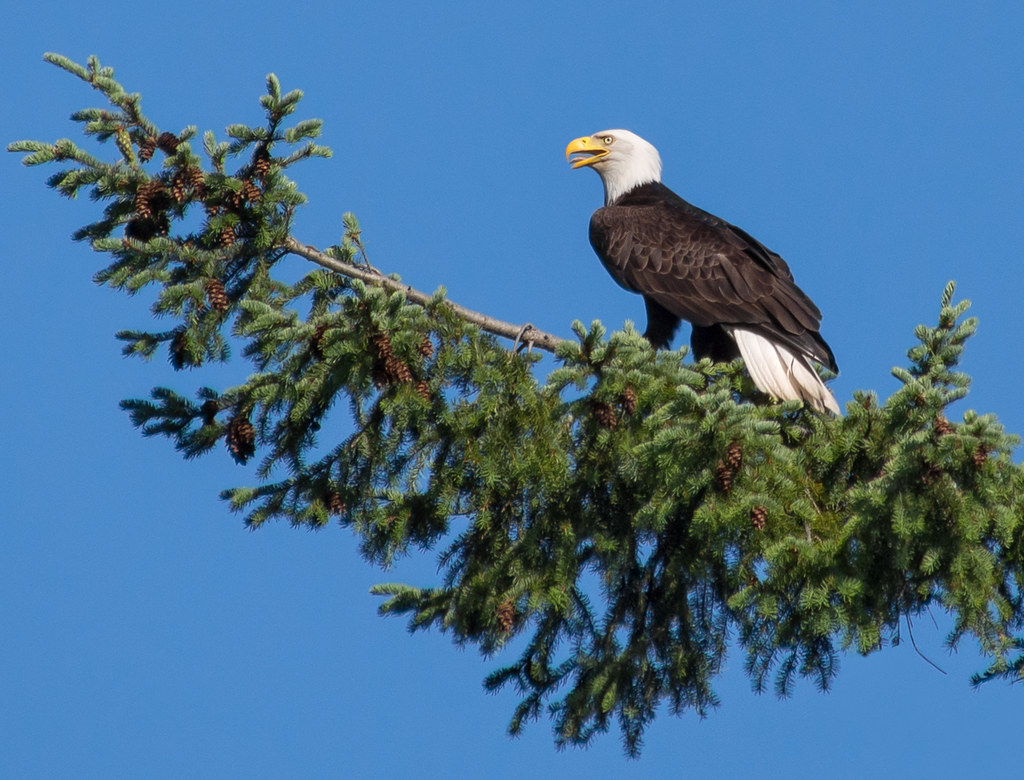
America’s national bird possesses a gaze that perfectly captures its status as a symbol of freedom and power—intense yellow eyes framed by a stark white head that creates dramatic contrast. The bald eagle’s piercing stare is enhanced by a pronounced brow ridge that gives it a perpetually focused, almost angry expression even when at rest. Their eyes contain about five times more visual cells than human eyes, allowing them to spot fish swimming beneath the water’s surface from hundreds of feet in the air. Bald eagles use their intimidating gaze not only for hunting but for maintaining pair bonds and defending territory from rivals. Their visual acuity is so extraordinary that they can spot a rabbit moving nearly a mile away, making their watchful eyes some of the most effective hunting tools in the natural world.
The Goshawk: Forest Phantom With Piercing Ruby Eyes
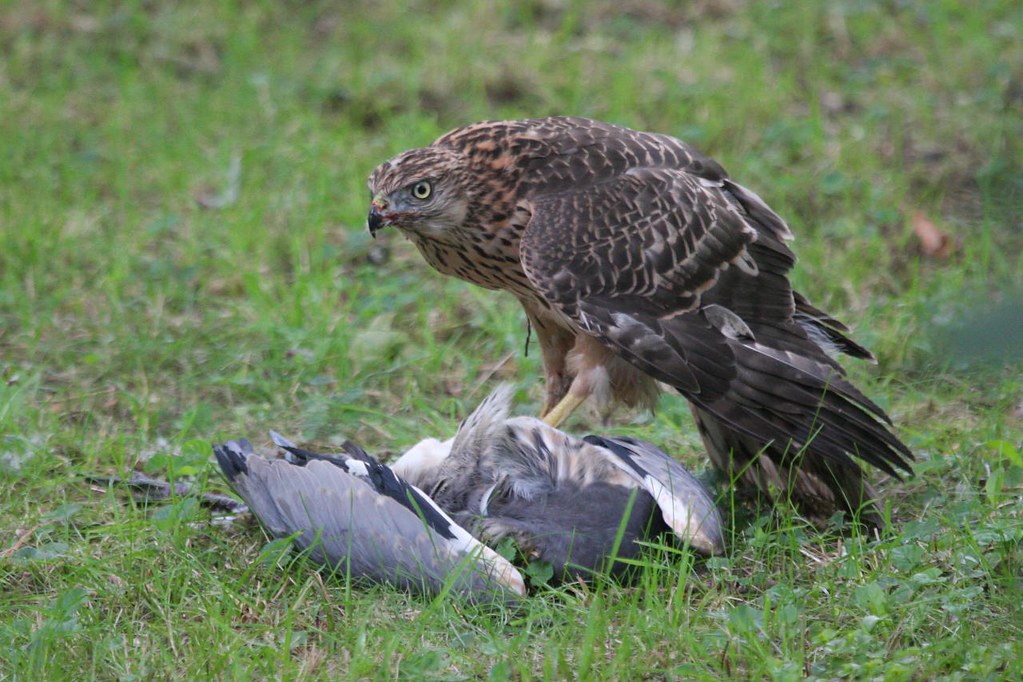
The northern goshawk combines fierce ruby-red eyes with a prominent white “eyebrow” streak to create one of the most intense and recognizable stares in the raptor family. These woodland hunters have been described by falconers throughout history as having a particularly intimidating gaze that reflects their aggressive hunting nature. Their blood-red eyes provide excellent contrast detection in the dappled light of forest environments, allowing them to track prey moving through complex visual backgrounds. Goshawks are known to fix potential prey with an unwavering stare before launching explosive attacks through dense forest cover—a hunting style that relies on both intimidation and precision. Their reputation for ferocity is well-earned, with their piercing gaze often being the last thing small mammals and birds witness before the raptor’s lightning-quick strike.
The Osprey: Fisherman With Laser-Focused Vision
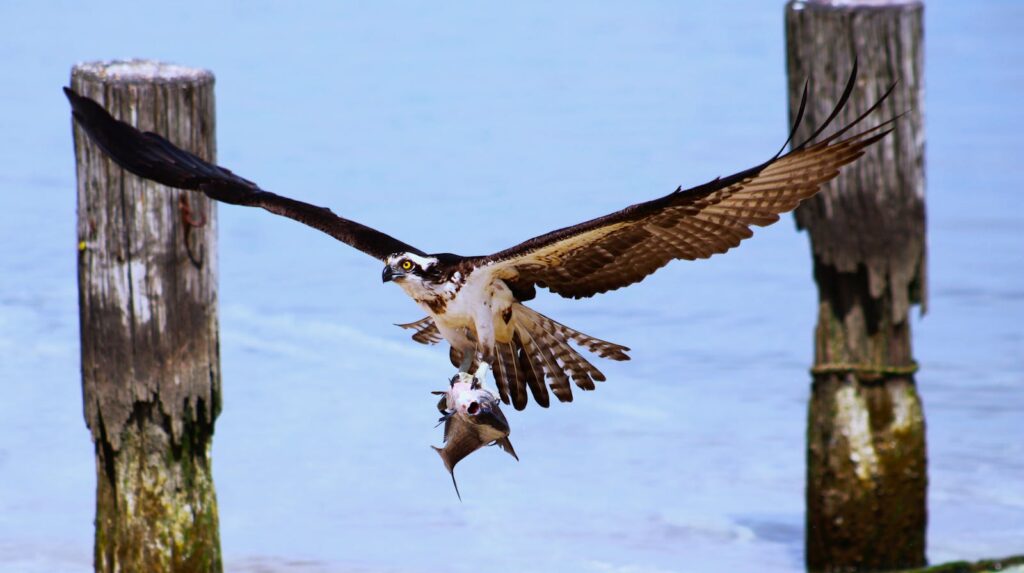
The osprey’s piercing yellow eyes reflect its specialized fishing lifestyle and contain adaptations that make it one of the most successful aquatic hunters among raptors. Their eyes can penetrate water surface glare thanks to specialized oil that filters out polarized light—essentially giving them natural polarized sunglasses. Ospreys possess a third, transparent eyelid called a nictitating membrane that protects their eyes while diving into water at high speeds without compromising their vision. Their intimidating gaze is heightened by a dark facial mask that frames their eyes, creating a focused, intense appearance that seems perpetually on the hunt. The precision of their vision allows them to spot fish swimming up to 10 feet below the water’s surface, adjust for refraction, and calculate the perfect dive angle—making their stare not just intimidating but extraordinarily accurate.
The Harris’s Hawk: The Social Starer
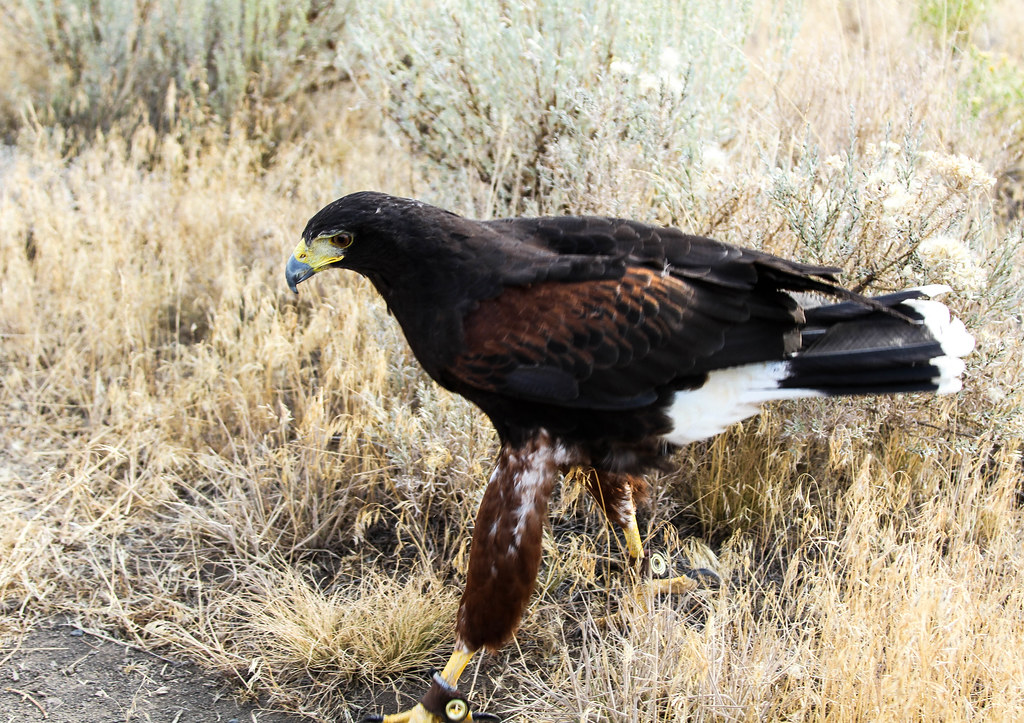
Unlike most solitary raptors, Harris’s hawks hunt in cooperative family groups, and their rich brown eyes reflect both their social nature and predatory intensity. These hawks possess a unique gaze that communicates complex social information to their hunting partners while simultaneously tracking prey. Their eyes feature a prominent supraorbital ridge that creates a hooded, focused appearance that enhances their intimidation factor. Harris’s hawks use their penetrating stare as part of coordinated hunting techniques, with some members of the group locking eyes with prey while others maneuver into striking position. Their social hunting strategy makes their collective gaze particularly intimidating—prey animals find themselves watched from multiple angles simultaneously, creating psychological pressure that often leads to panic and tactical errors.
The Secretary Bird: The Serpent-Staring Specialist
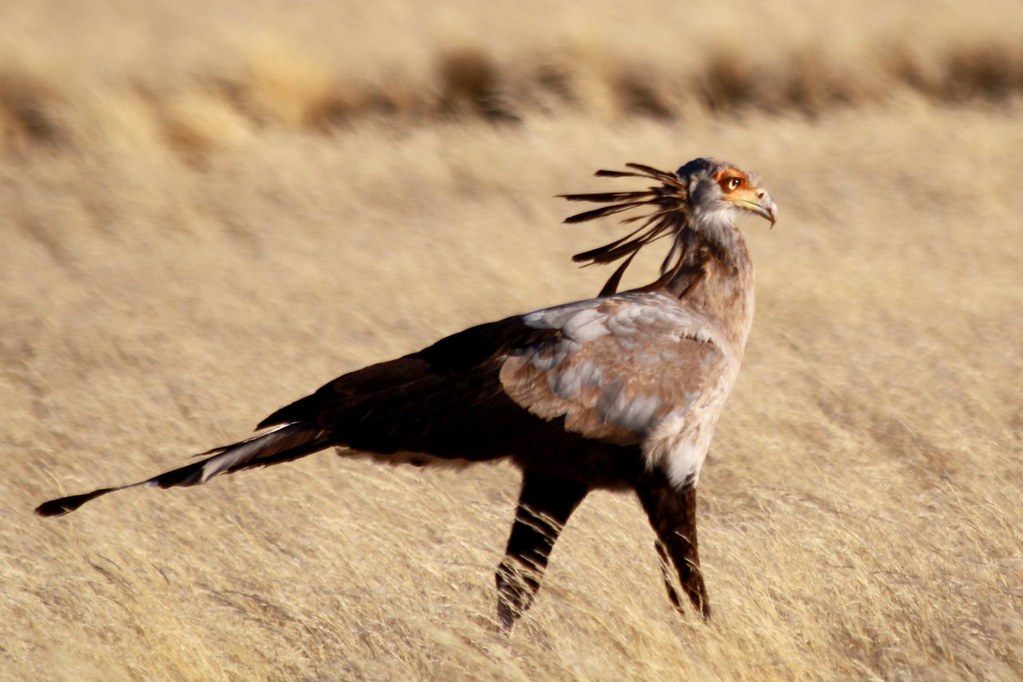
The secretary bird of African savannas possesses distinct orange-yellow eyes that have evolved specifically to spot and track venomous snakes—their preferred prey. Their eyes are positioned to provide excellent downward vision while maintaining height advantage, allowing them to spot serpentine movement in tall grasslands. Secretary birds have developed exceptionally precise visual tracking abilities that help them deliver perfectly timed kicks to dispatch dangerous prey without being bitten. Their intimidating gaze is enhanced by distinctive black feathering around the eyes that creates a mascara-like appearance, giving them an almost theatrical fierceness. These specialized snake hunters rely on their penetrating stare to monitor every movement of their dangerous prey, maintaining continuous visual contact throughout their precise hunting strikes.
The Science Behind the Stare: Visual Adaptations
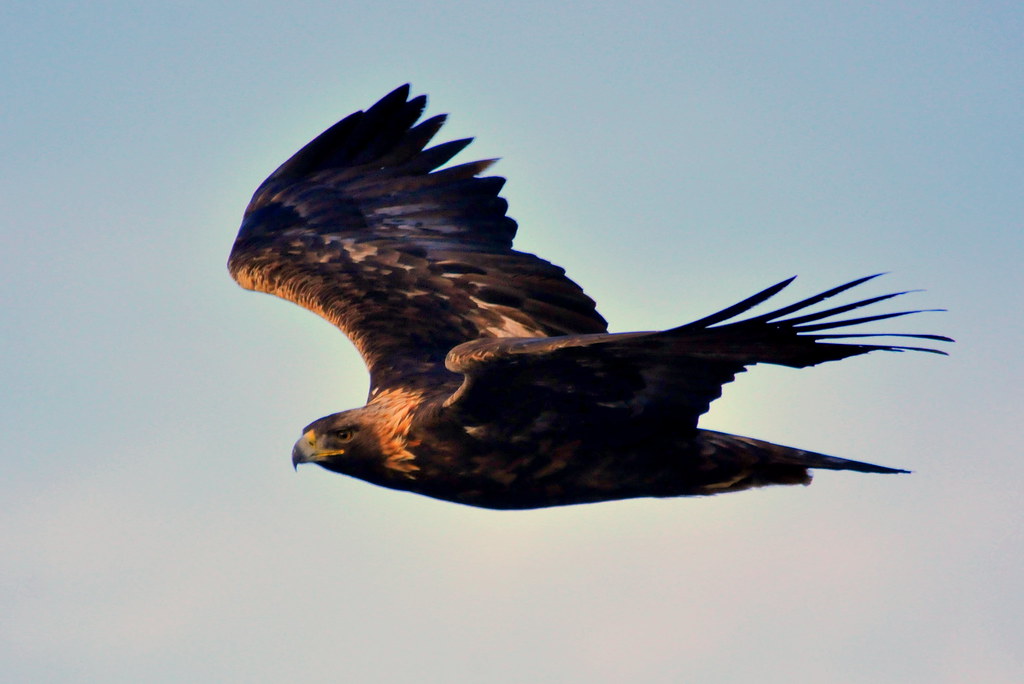
Raptors’ intimidating gazes result from several remarkable physiological adaptations that set them apart from other birds and mammals. Most species possess an anatomical feature called the fovea—a concentrated area of photoreceptor cells that provides exceptional detail perception, with some raptors having two foveal areas for simultaneous distance and close-up vision. Their eyes contain more light-sensitive cells (photoreceptors) per area than human eyes, with some species having five times our visual acuity. Eagles and other diurnal raptors can see ultraviolet light invisible to humans, allowing them to track urine trails of prey animals or detect the reflective properties of rodent fur. The musculature surrounding raptor eyes allows for microscopic adjustments to maintain focus during high-speed pursuits and dives, a capability that contributes to their seemingly unwavering, penetrating stare.
Cultural Significance: Raptors’ Gazes in Human Society
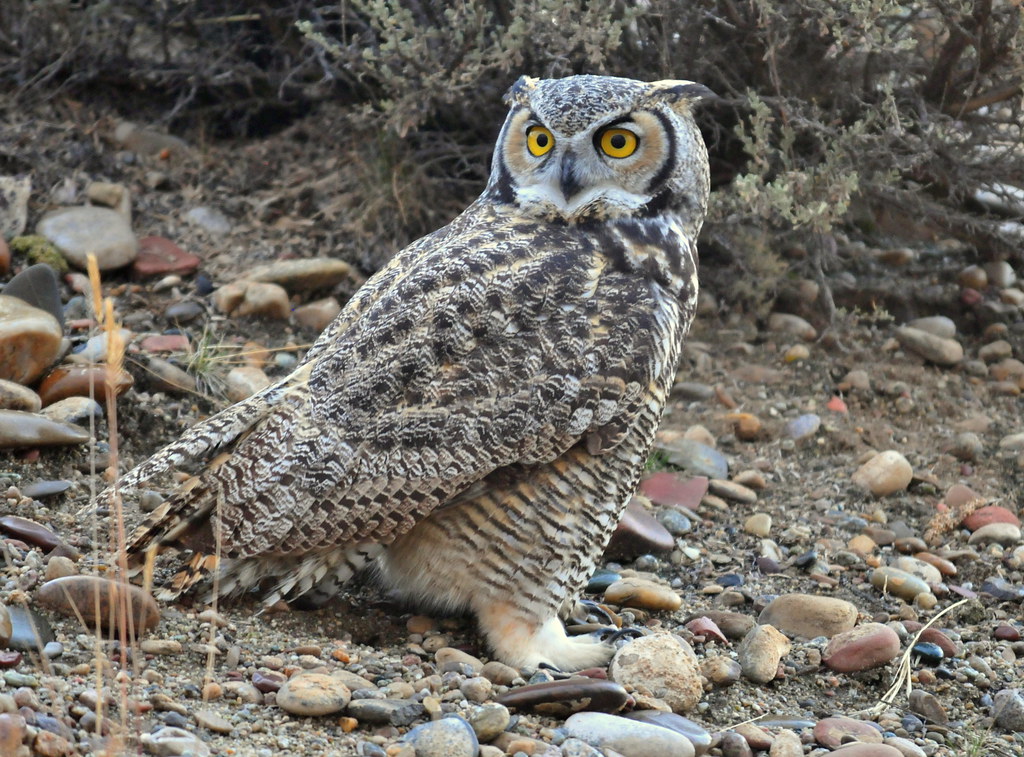
The penetrating stares of raptors have profoundly influenced human culture, mythology, and symbolism throughout history. Ancient Egyptians revered the falcon’s gaze, associating it with the god Horus and incorporating its piercing eyes into royal insignia and protective amulets. Native American traditions often view the eagle’s stare as a connection to spiritual realms, believing their penetrating vision allows them to see beyond physical reality. Modern military and sports organizations worldwide adopt raptor imagery—particularly their fierce eyes—to symbolize vigilance, precision, and power. The psychological impact of raptor stares is so universally recognized that eye patterns mimicking predatory birds are used on butterfly wings, moth wings, and even artificial deterrents designed to scare away pest birds—testament to the cross-species recognition of these gazes as symbols of threat and power.
Conservation Challenges: Protecting Nature’s Piercing Gazes
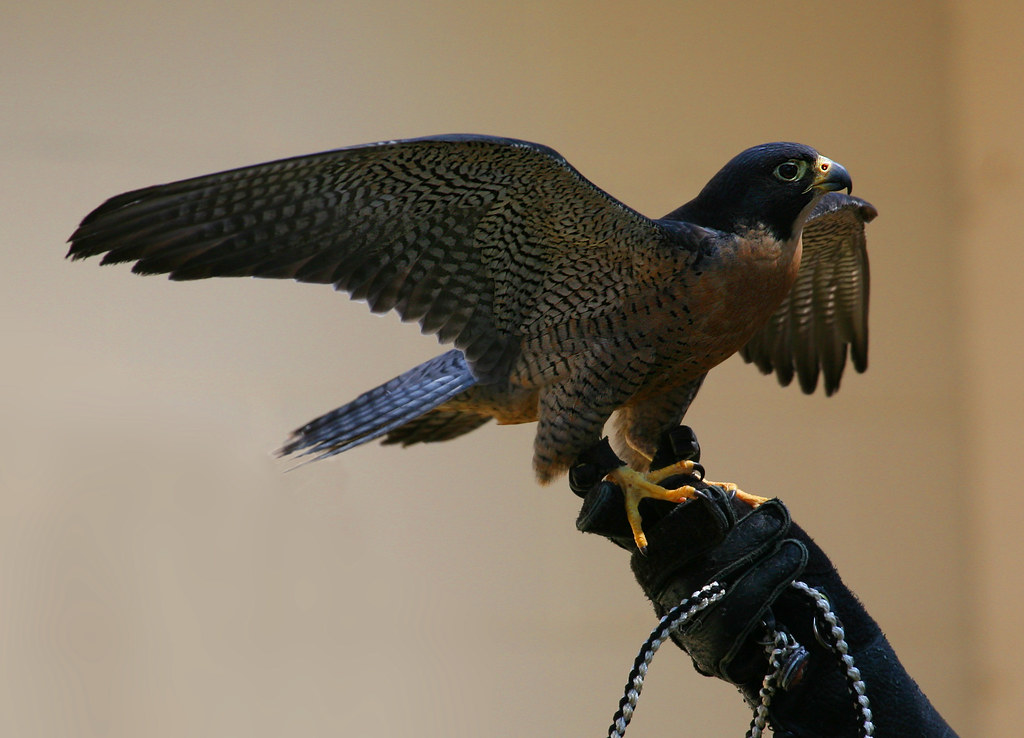
The magnificent eyes that define these apex predators face numerous threats in the modern world, with several species experiencing population declines that put their future in jeopardy. Habitat loss remains the primary threat, as urban expansion and agricultural development eliminate the hunting territories these visual specialists require. Chemical pollutants, particularly pesticides like DDT historically and newer rodenticides, can cause physiological damage to raptors’ sophisticated visual systems or reduce prey availability. Climate change disrupts breeding timing and prey availability patterns, creating mismatches between when raptors produce young and when food is most abundant. Conservation efforts specifically targeting raptors include artificial nest platforms, captive breeding programs, and legislation protecting these birds from persecution—measures aimed at ensuring future generations can experience the awe of meeting a raptor’s intimidating gaze in the wild.
Encountering the Gaze: What to Do When Face-to-Face
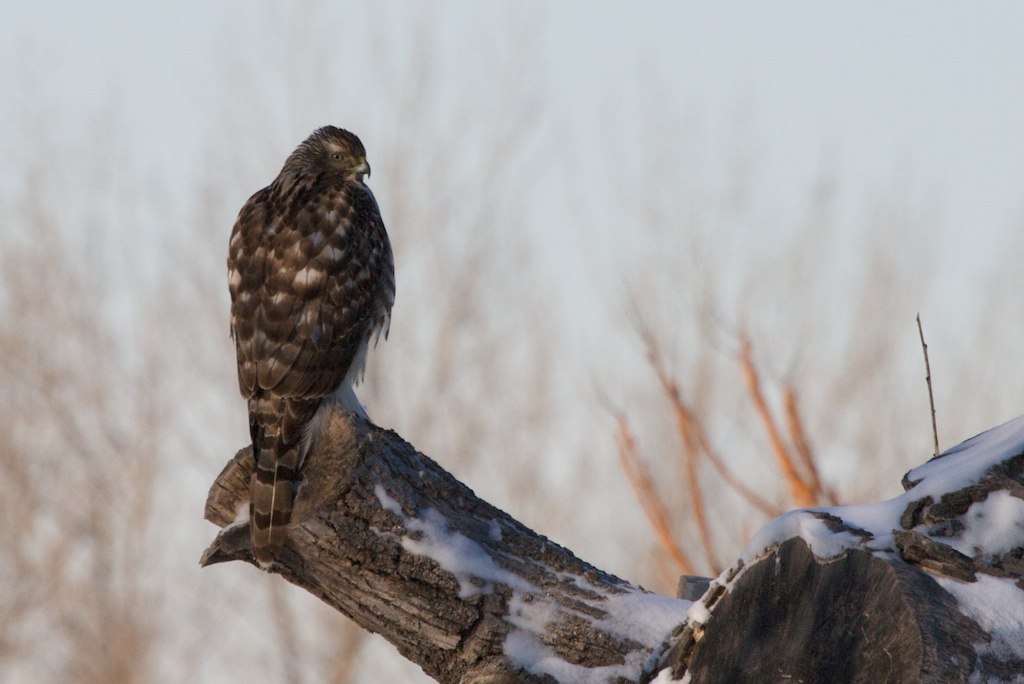
Coming face-to-face with a raptor’s intimidating stare can be one of nature’s most humbling experiences, and knowing how to respond appropriately is important for both human and bird safety. Wildlife experts recommend maintaining a respectful distance and avoiding direct eye contact if you encounter a wild raptor at close range, as staring back can be perceived as a threat or challenge. If working with captive raptors in educational or rehabilitation settings, handlers are trained to avoid sustained eye contact and approach from angles that don’t trigger defensive responses. Photographers seeking to capture raptor portraits should use telephoto lenses that allow sufficient distance, as close approaches may stress the birds or provoke defensive reactions. The intensity of these birds’ gazes has evolved as a survival mechanism, and respecting the power behind those eyes honors the evolutionary journey that created such remarkable visual hunters.
The fierce, penetrating stares of raptors represent some of nature’s most perfect adaptations—visual systems honed through millions of years of evolution to create the ultimate predatory advantage. From the golden eagle’s royal gaze to the owl’s hypnotic stare, these birds command respect through their eyes alone. Their extraordinary vision allows them to occupy the apex predator niche in ecosystems worldwide, maintaining balance through their hunting prowess. As we work to protect these magnificent birds and their habitats, we preserve not just species but the opportunity for future generations to experience that singular moment when human eyes meet raptor eyes—a connection across species that reminds us of nature’s power, precision, and fierce beauty. Few natural encounters can match the primal wonder of meeting the gaze of these masters of the sky, whose stares have intimidated prey and inspired human imagination throughout our shared history.
